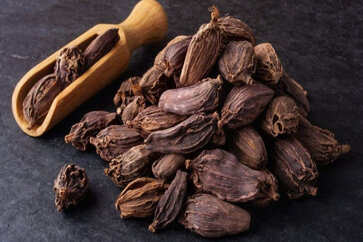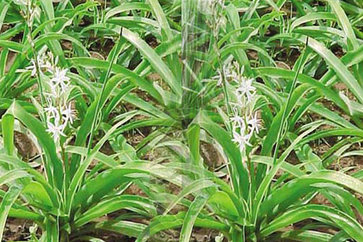Nadi Shodhana: Ancient Breathing Technique for Mind and Body
In the fast-paced modern world, stress, anxiety, and mental fatigue have become ubiquitous. Amidst the chaos, ancient yogic practices like Nadi Shodhana (alternate nostril breathing) offer a sanctuary of calm and balance. Rooted in the wisdom of Ayurveda and yoga, this pranayama technique is more than just a breathing exercise—it’s a gateway to harmonizing the body’s energy channels, calming the mind, and revitalizing the spirit.
In this comprehensive guide, we’ll explore the science-backed benefits of Nadi Shodhana, its historical origins, step-by-step instructions for practice, variations, and precautions to ensure safe and effective integration into your daily routine.
By tapping into this powerful tool, you can restore mental clarity and emotional equilibrium. Whether you’re a beginner or experienced practitioner, Nadi Shodhana can be easily adapted to fit any lifestyle. Embrace this simple yet profound practice to enhance your overall well-being and inner peace.
What Is Nadi Shodhana?
Nadi Shodhana, derived from Sanskrit (nadi = “channel” and shodhana = “purification”), is a foundational pranayama (breath control) practice in yoga. It involves alternating breaths between the left and right nostrils to cleanse and balance the body’s subtle energy pathways, known as nadis.
According to yogic philosophy, there are 72,000 nadis in the human body, with Ida (associated with the left nostril) and Pingala (right nostril) being the most significant. These channels correspond to the parasympathetic (rest-and-digest) and sympathetic (fight-or-flight) nervous systems, respectively.
The Purpose of Nadi Shodhana
The primary goal of Nadi Shodhana is to harmonize Ida and Pingala, creating equilibrium between mental clarity (Ida’s lunar, cooling energy) and physical vitality (Pingala’s solar, heating energy).
This balance prepares the practitioner for deeper meditative states and fosters holistic well-being. Modern science corroborates these benefits, linking the practice to improved heart rate variability, reduced cortisol levels, and enhanced cognitive function.
Benefits of Nadi Shodhana
Nadi Shodhana, also known as alternate nostril breathing, is a powerful pranayama technique that promotes balance and relaxation. It helps reduce stress, improve focus, and cleanse the energy channels, enhancing overall physical and mental well-being. Below are some of the benefits:
1. Mental Clarity and Focus
Nadi Shodhana’s rhythmic breathing activates the prefrontal cortex, improving decision-making and focus. A 2013 study in the Journal of Alternative and Complementary Medicine found that 30 minutes of alternate nostril breathing enhanced executive functioning and emotional regulation. This practice calms mental chatter, boosting concentration—ideal for students, professionals, and anyone seeking cognitive clarity.
2. Nervous System Balance
Nadi Shodhana stimulates the vagus nerve, a key component of the parasympathetic nervous system. This activation triggers the body’s relaxation response, lowering heart rate, blood pressure, and cortisol levels. In contrast, shallow chest breathing—common during stress—engages the sympathetic nervous system, perpetuating anxiety. Regular practice can help rewire the autonomic nervous system, promoting resilience against chronic stress.
3. Respiratory Health
Alternate nostril breathing strengthens the diaphragm and intercostal muscles, improving lung capacity and oxygenation. A 2018 study in the International Journal of Yoga demonstrated that 12 weeks of Nadi Shodhana increased forced vital capacity (FVC) and forced expiratory volume (FEV1) in participants, benefiting those with asthma or chronic obstructive pulmonary disease (COPD).
4. Emotional Equilibrium
Nadi Shodhana balances the brain’s hemispheres, promoting emotional stability. The left hemisphere controls logic, while the right governs creativity. By synchronizing both sides through breath, this practice fosters inner harmony, reducing mood swings and reactivity. Regular practice helps create a calmer, more balanced emotional state, enhancing overall mental well-being.
5. Detoxification of Body
Deep, conscious breathing enhances lymphatic drainage and oxygen exchange, aiding the body’s natural detox. Alternating nostril closure clears nasal passages, reducing allergens and pollutants. This practice supports overall immune function, promoting better respiratory health and encouraging the body’s ability to remove toxins, leading to improved overall wellness.
6. Improve Sleep Quality
Practicing Nadi Shodhana before bed activates the parasympathetic nervous system, signaling the body to unwind. A 2019 pilot study in Applied Psychophysiology and Biofeedback noted that participants who performed the technique for 10 minutes nightly reported falling asleep faster and experiencing deeper sleep cycles, contributing to overall restfulness.
7. Enhanced Energy Flow (Prana)
In yoga, prana (life force) flows through nadis, and blockages can cause physical or emotional issues. Nadi Shodhana clears these blockages, revitalizing the body and mind. Regular practice promotes balanced energy flow, boosting vitality and improving overall health. It enhances well-being by supporting mental clarity, emotional stability, and physical vitality.
8. Enhanced Mind-Body Connection
The practice of Nadi Shodhana helps foster a deeper connection between mind and body. By calming the nervous system and promoting focused awareness, individuals can develop a greater sense of presence in their body, leading to improved body awareness, better posture, and more mindful movements.
9. Reduce Anxiety and Depression
Consistent practice of Nadi Shodhana has been shown to decrease symptoms of anxiety and depression. By activating the parasympathetic nervous system, it helps reduce stress hormones like cortisol while boosting serotonin levels, leading to improved mood regulation and emotional resilience.
10. Improve Cognitive Function and Memory
Nadi Shodhana has been shown to enhance cognitive function by increasing oxygen flow to the brain. Regular practice supports neuroplasticity, the brain’s ability to adapt and grow, which may improve memory, learning abilities, and mental agility. This can be particularly beneficial for those looking to sharpen their cognitive skills and improve overall brain health.
How to Practice Nadi Shodhana: A Step-by-Step Guide
Preparation
1. Posture: Sit in a comfortable cross-legged position (Sukhasana, Siddhasana) or on a chair with feet flat. Keep the spine erect to allow unrestricted breath flow.
2. Environment: Choose a quiet, clean space free of distractions. Early morning or sunset are optimal times.
3. Empty Stomach: Practice 2–3 hours after eating to avoid discomfort.
Hand Position (Vishnu Mudra)
1. Right Hand: Fold the index and middle fingers into the palm, leaving the thumb, ring, and little fingers extended.
2. Thumb: Gently close the right nostril.
3. Ring Finger: Closes the left nostril.
Step-by-Step Instructions
1. Begin: Close the right nostril with the thumb. Inhale slowly and deeply through the left nostril for 4 counts.
2. Retain (Optional): Advanced practitioners can hold their breath (Antara Kumbhaka) for 4 counts.
3. Switch: Close the left nostril with the ring finger, release the thumb, and exhale fully through the right nostril for 8 counts.
4. Inhale Right: Keep the left nostril closed. Inhale through the right nostril for 4 counts.
5. Retain (Optional): Pause for 4 counts.
6. Switch Again: Close the right nostril, open the left, and exhale for 8 counts.
7. Repeat: Continue for 5–10 cycles, gradually increasing duration.
Breathing Ratios
- Beginners: 4:4 (inhale: exhale ).
- Intermediate: 4:8 (inhale: exhale ).
- Advanced: 4:4:8 (inhale:hold: exhale ).
Tips for Success
- Keep the breath smooth, silent, and diaphragmatic.
- Focus on the sensation of air moving through the nostrils.
- Use a timer or guided audio to maintain rhythm.
Variations of Nadi Shodhana
These variations of Nadi Shodhana (alternate nostril breathing) each offer distinct benefits by influencing the body’s energy and balance.
1. Chandra Bhedana (Moon-Piercing Breath)
- Technique: Close the right nostril, and inhale deeply through the left. Close the left nostril, and exhale through the right.
- Effect: It has a cooling effect, calming the mind and soothing emotions. It’s especially helpful in managing Pitta dosha (heat, intensity) and can be great for those dealing with stress or hot climates.
- This breath encourages relaxation and reduces excessive mental activity, promoting a peaceful state of mind. It can also help reduce anxiety and emotional tension.
2. Surya Bhedana (Sun-Piercing Breath)
- Technique: Close the left nostril, inhale deeply through the right. Close the right nostril, and exhale through the left.
- Effect: This technique increases internal heat, energizes the body, and stimulates the mind. It is most beneficial for Kapha dosha (cold, sluggish) or when you need a pick-me-up during winter or low-energy times.
- It revitalizes the body, promoting clarity and focus, which is useful when you need to overcome lethargy or fatigue. Surya Bhedana can also improve digestion and circulation.
3. Nadi Shodhana with Mantra
- Practice: While performing alternate nostril breathing, silently chant the mantra “So Hum.” Inhale as you mentally say “So,” and exhale as you mentally say “Hum.”
- Effect: This combines the calming benefits of Nadi Shodhana with the grounding, centering energy of a mantra, deepening the meditative experience and promoting mindfulness.
- The mantra aligns the breath with the body’s rhythm, enhancing self-awareness and reducing mental clutter. It can also promote a deeper sense of connection to the present moment and higher consciousness.
Precautions and Contraindications
Avoid If:
- Suffering from severe nasal congestion: If you have significant nasal blockage, it’s important to clear your sinuses first with methods like a neti pot before attempting Nadi Shodhana.
- Recovering from heart surgery or stroke: Nadi Shodhana can affect circulation and should be avoided if you’re recovering from a serious heart condition or stroke unless otherwise advised by a healthcare professional.
- Diagnosed with uncontrolled hypertension or glaucoma: Breathing exercises involving breath retention or certain breathing patterns can increase pressure in the body, so avoid these if your blood pressure or eye pressure is not under control.
During Pregnancy:
- Skip breath retention (holding the breath) as it can cause unnecessary stress on the body. Instead, focus on gentle and balanced breathing ratios that don’t strain the system. Avoid any rapid or forceful breathing techniques.
For Beginners:
- If you’re new to Nadi Shodhana, start with 2–3 minutes of practice daily to prevent dizziness or lightheadedness. Gradually increase the duration as your comfort and experience grow. Always listen to your body to ensure you’re practicing safely.
These precautions are crucial to ensure the practice is safe and beneficial, especially for those with certain health conditions. Always consult a doctor if you have any doubts before starting a new practice.
Integrating Nadi Shodhana into Daily Life
- Pair with morning meditation or evening wind-down routines: Start your day with Nadi Shodhana to center and calm the mind, setting a peaceful tone for the rest of the day. Alternatively, use it in the evening to unwind, clear any mental clutter, and promote restful sleep.
- Use as a “reset” during work breaks or before important tasks: When feeling stressed or overwhelmed during work, take a few minutes to practice Nadi Shodhana. It helps reset your energy, clears mental fog, and enhances focus, making you more productive and calm before diving into important tasks or meetings.
- Combine with asana (yoga postures) for a holistic practice: Integrating Nadi Shodhana with your yoga practice can deepen the benefits of both. It enhances body awareness, brings more oxygen to the muscles, and cultivates mindfulness throughout your asanas, creating a full-body, balanced experience.
By incorporating Nadi Shodhana into these daily moments, you bring more clarity, calmness, and intentionality to your life.
FAQs
1. What does Nadi Shodhana do?
Nadi Shodhana, or alternate nostril breathing, helps clear blockages in the body’s energy channels (nadis), promoting mental clarity, relaxation, and emotional balance. It also calms the nervous system and revitalizes the body and mind.
2. Are Anulom Vilom and Nadi Shodhana the same?
Yes, Anulom Vilom is another name for Nadi Shodhana. Both terms refer to the same pranayama technique of alternating breath through each nostril to balance energy and calm the mind.
3. What are the benefits of breathing from the left nostril?
Breathing through the left nostril (Chandra Bhedana) is cooling and calming. It activates the parasympathetic nervous system, helping to reduce stress, anxiety, and mental fatigue.
4. Which pranayama purifies all the 72,000 nadis?
Nadi Shodhana (alternate nostril breathing) is believed to purify the 72,000 nadis in the body, balancing the flow of prana (life energy) and removing energy blockages.
5. What happens when you do 30 minutes of Kapalbhati daily?
Practicing Kapalbhati (skull-shining breath) for 30 minutes daily can help improve lung capacity, increase oxygen flow, and detoxify the body. It can also enhance mental clarity, reduce stress, and improve digestion.
6. Who should not do Nadi Shodhana?
Individuals with severe nasal congestion, uncontrolled hypertension, glaucoma, or heart conditions should avoid Nadi Shodhana. Pregnant women should avoid breath retention and practice gentle breathing.
7. How many times should I do Nadi Shodhana?
Beginners can start with 2-3 minutes daily and gradually increase the duration. A typical session might involve 5-10 minutes of practice, 5-10 cycles of alternating breaths per session.
8. Which is the safest pranayama?
Ujjayi Pranayama (victorious breath) is considered one of the safest pranayamas for beginners. It involves gentle, controlled breathing through the nose and can be practiced during yoga asana or meditation.
9. What are the 3 most important nadis?
The three most important nadis in yoga are Ida (left channel, cooling, feminine), Pingala (right channel, heating, masculine), and Sushumna (central channel, where spiritual energy flows).
10. How many cycles of Nadi Shodhana?
A typical session of Nadi Shodhana involves 5-10 cycles, depending on experience and comfort level. You can increase the number of cycles as you gain proficiency.
11. What are the side effects of Anulom Vilom?
For most people, Anulom Vilom is safe. However, excessive practice can lead to dizziness, anxiety, or lightheadedness. It’s important to practice gently and in moderation.
12. What is Sitali breath?
Sitali breath is a cooling pranayama technique where you inhale through a rolled tongue (or pursed lips if you can’t roll your tongue) and exhale through the nose. It helps to calm the mind, reduce stress, and cool the body, making it ideal for hot weather or when feeling overheated.
Nadi Shodhana is a timeless tool for cultivating equilibrium in an unbalanced world. By dedicating just 5–10 minutes daily to this practice, you can unlock profound mental clarity, emotional resilience, and physical vitality. Remember, consistency is key—approach your practice with patience and self-compassion.
Resources:
- Effects of Nadishodhana and Bhramari Pranayama on heart rate variability, auditory reaction time, and blood pressure: A randomized clinical trial in hypertensive patients(1)
- Analyzing the impact of nadi shodhan pranayama (alternate nostril breathing) on health and stress management among generation(2)
- Impact of Nadi Shuddhi Pranayama on Apnea Hypopnea Index, Respiratory Distress Index, and Oxygen Desaturation Index Among Adolescents With Sleep Apnea Syndrome(3)
- Effects of a 6-week nadi-shodhana pranayama training on cardio-pulmonary parameters(4)


























